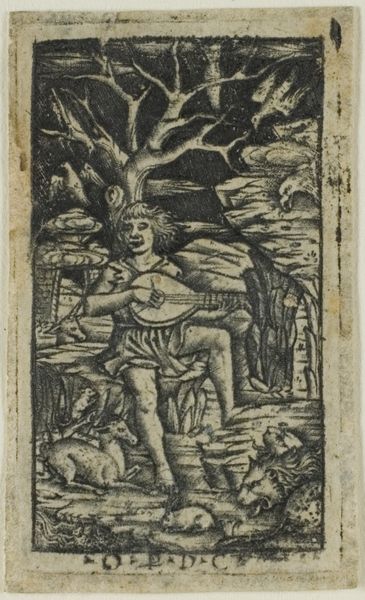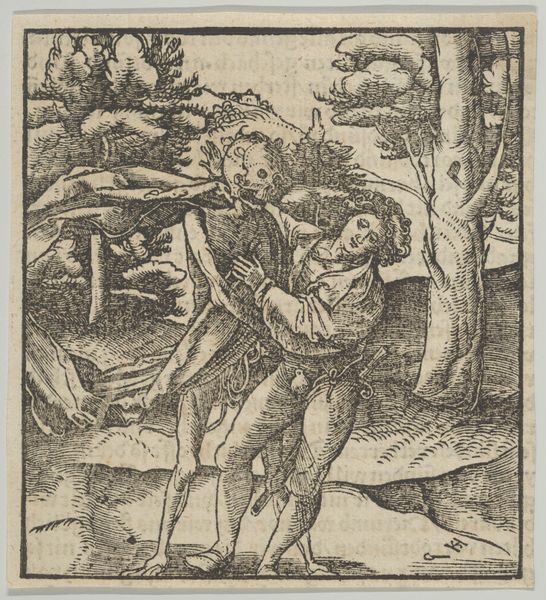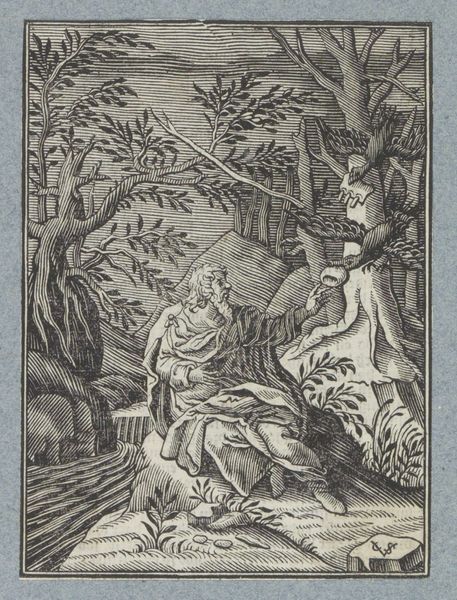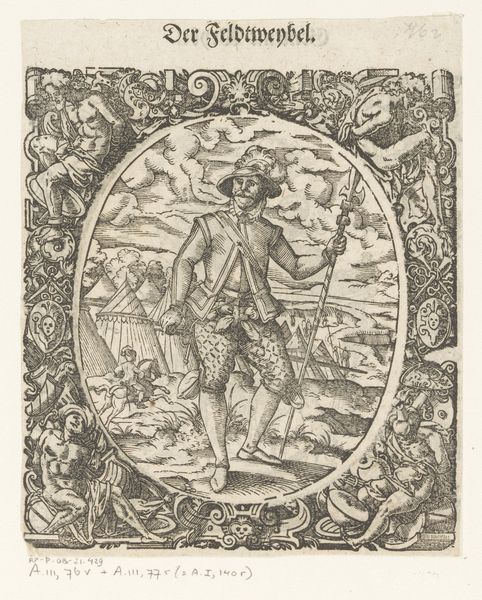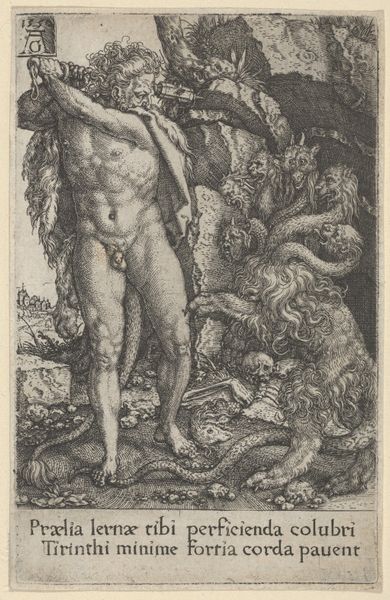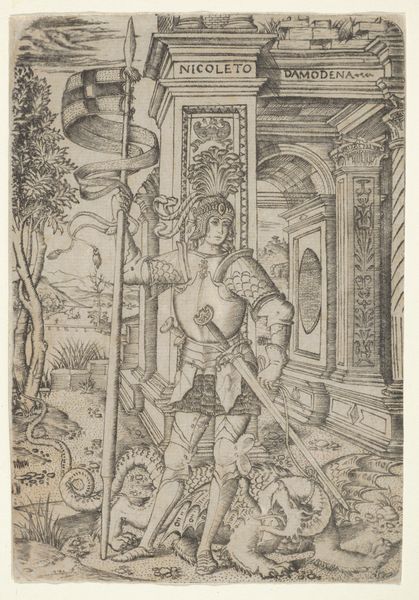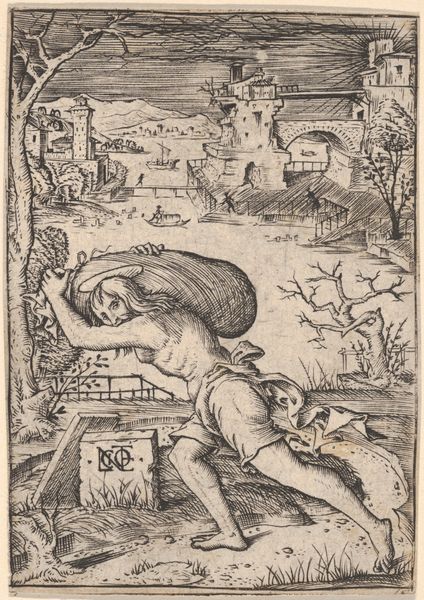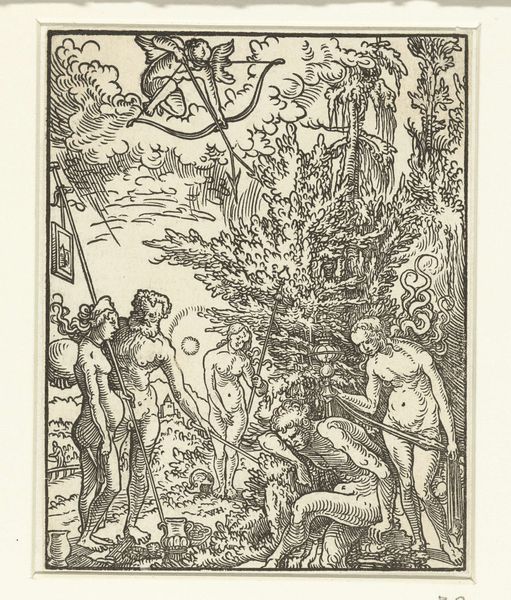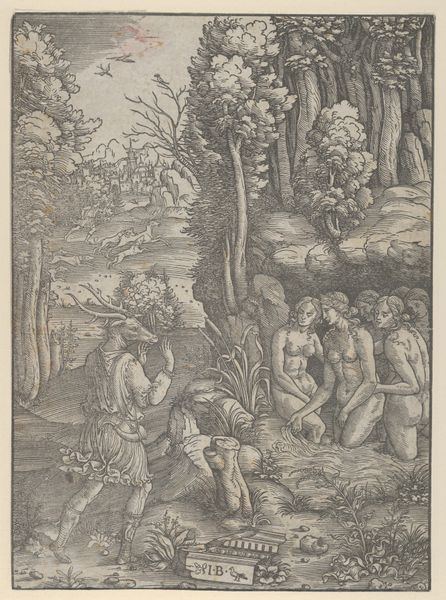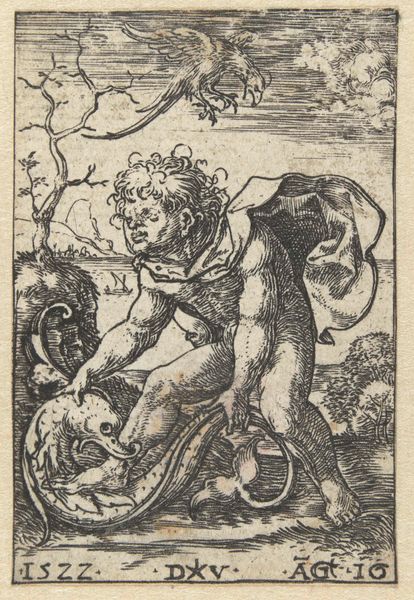
Orpheus seated playing his lyre, and charming the animals 1495 - 1505
0:00
0:00
drawing, print, engraving
#
drawing
#
narrative-art
# print
#
figuration
#
line
#
genre-painting
#
musical-instrument
#
italian-renaissance
#
engraving
Dimensions: Plate: 2 1/16 x 1 3/16 in. (5.2 x 3 cm)
Copyright: Public Domain
Editor: This engraving by Peregrino da Cesena, titled "Orpheus seated playing his lyre, and charming the animals," dates back to somewhere between 1495 and 1505. The detail crammed into this tiny scene is amazing. I’m immediately struck by the contrast between Orpheus’s serene expression and the slightly chaotic menagerie surrounding him. How do you read this piece, particularly thinking about its cultural context? Curator: It's a fascinating piece, especially when viewed through the lens of the Renaissance's renewed interest in classical mythology and the socio-political function of art. Think about what Orpheus represents: harmony, civilization, the power of art to soothe and order the natural world. An image like this wasn’t just decorative; it functioned within a broader Humanist discourse that celebrated reason, learning, and the civilizing mission of art. The print format itself, what does that tell you about its intended audience and use? Editor: Well, being a print, it's inherently more accessible, suggesting it might have been aimed at a wider audience than, say, a unique painting commissioned by a wealthy patron. Were these kinds of images used for educational purposes perhaps, spreading classical stories and values? Curator: Precisely. Prints played a crucial role in disseminating knowledge and shaping cultural values. Images of Orpheus like this circulated widely, reinforcing the ideals of a refined, ordered society through classical allegory. It served as a visual reminder of art's transformative power and of humanity’s potential for intellectual and moral progress. The very act of choosing this subject has political undertones in the rise of artistic patronage and power! Editor: So, it's not just a pretty picture; it's a statement about the power of art and culture within society at the time. It’s amazing how much social history can be packed into a tiny engraving. I see so much more now! Curator: Indeed. Examining the image through this socio-historical lens unveils the complex web of meaning woven into even seemingly simple artworks. Now, think about other imagery of Orpheus throughout history. How does this particular print reinforce or depart from that established visual language?
Comments
No comments
Be the first to comment and join the conversation on the ultimate creative platform.
